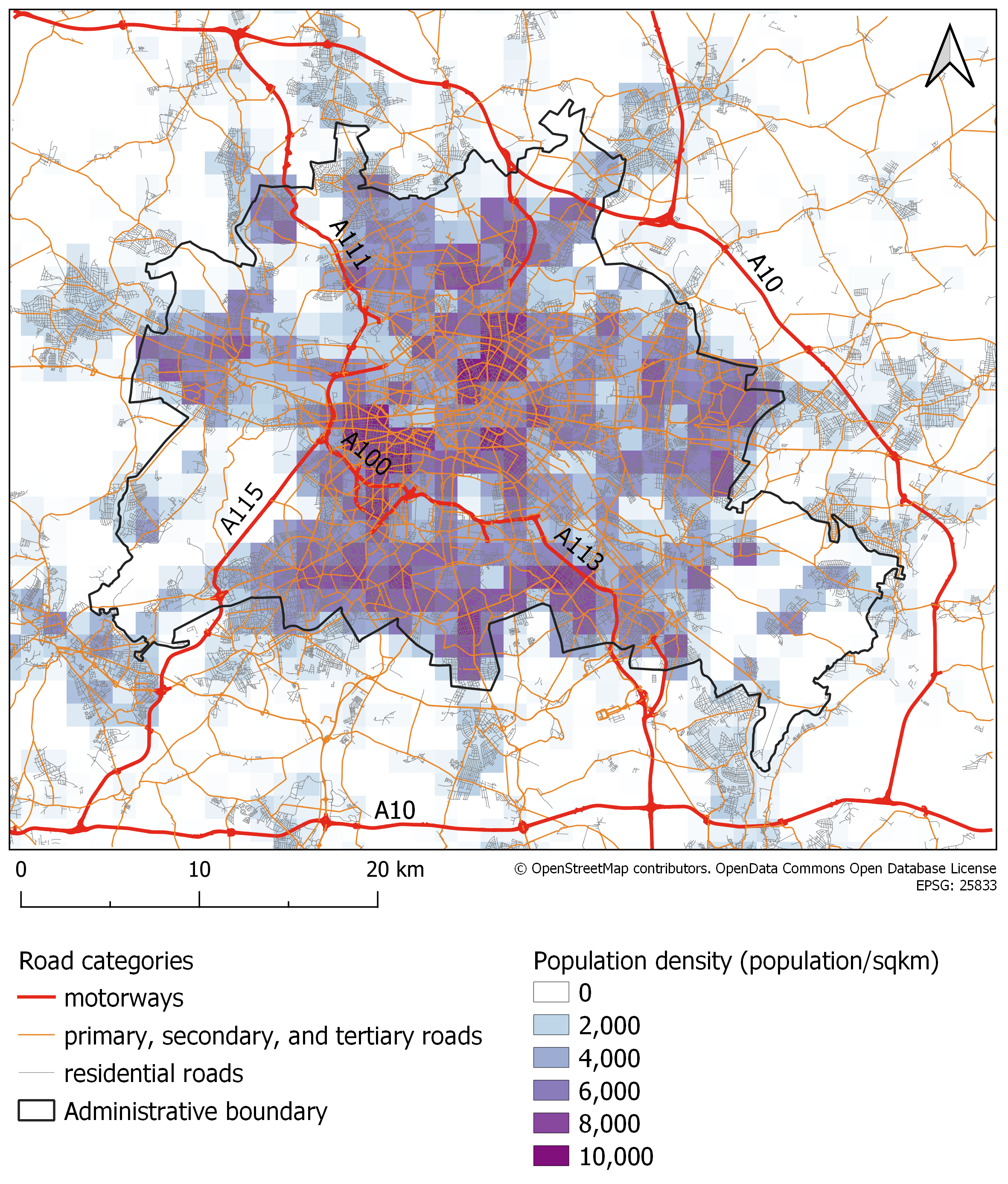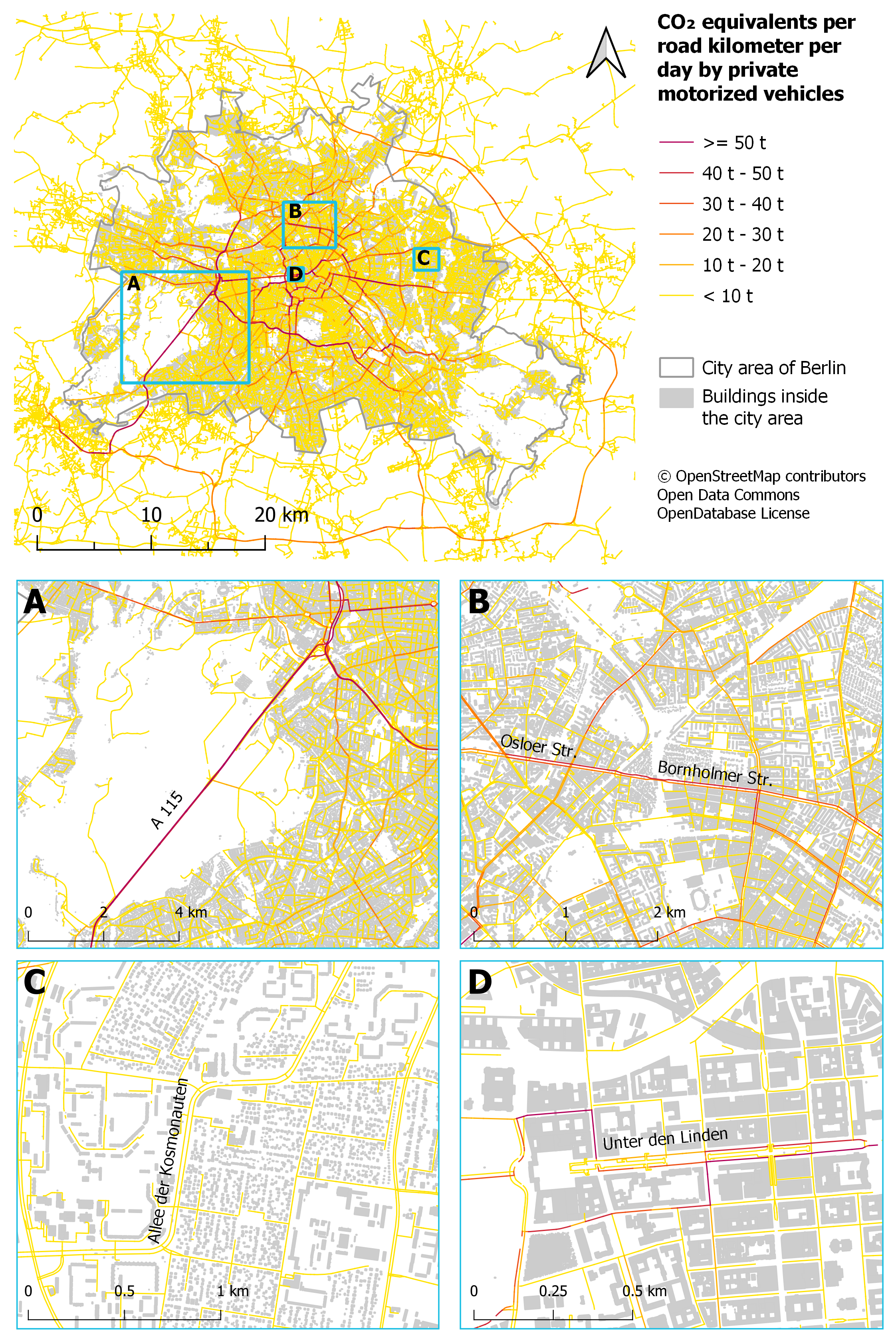Since the transportation sector is one of the major greenhouse gas (GHG) emitters that has not seen significant emission reductions in the last decades, it requires special attention from policymakers. However, estimations of traffic emissions often rely on huge amounts of actual traffic data whose availability is limited. Therefore, Ulrich et al. now propose an approach of high-resolution estimation of traffic emissions in their paper.

Figure 1 from paper. Road network of a bounding box covering the city of Berlin and an additional buffer of a 5 km minimum to the city borders extracted from OpenStreetMap (OSM) and population density based on the Global Human Settlement Layer.
Methods
The proposed high-resolution estimation of traffic emissions is based entirely on open data, such as points of interest and the road network obtained from OpenStreetMap (OSM). The used approach can be divided into three key steps: First of all, we generated the betweenness centrality of each OSM road segment in Berlin by simulating car trips with the open routing engine OpenRouteService (ORS), weighted by activity functions based on statistical information about the total number of trips in the research area. Next, we estimated the Annual Average Daily Traffic Volume (AADTV) as a proportion of the total number of trips by privately owned, motorized vehicles, using the normalized centrality as a ratio. Finally, we estimated the greenhouse gas emissions for the road segments by combining the AADTV with the respective emission factors provided by the Transport Emission Model (TREMOD).

Figure 2 from paper. GHG emissions of private motorized vehicles on the road network of Berlin and four example areas: (A) Motorway A115 with emissions > 50 t CO2 equivalent per road kilometer per day; (B) Example for primary roads with emissions > 30 t CO2 equivalent per road kilometer per day; (C) Example for residential roads with emissions < 10 t CO2 equivalent per road kilometer per day; (D) Inner city area.
Results
The study revealed the total annual GHG emissions from privately owned motorized vehicles in the city of Berlin to be an estimated 7.3 million t CO2 equivalent per year. The emissions ranged from <10 t/day on most residential and minor roads up to 100 t/day. The highest emissions were estimated for the motorway segments and major roads connecting the city center with the outskirts.
Conclusion
The application of the approach to Berlin demonstrated that the method could reflect the traffic pattern. Moreover, the study showed that a betweenness centrality-based approach relying on open data could be applied to estimate GHG emissions of motorized individual traffic. Since the input data is freely available, the approach can also be applied to other study areas within Germany. Only little additional effort is needed.
For full paper and all references:
- Ulrich, V.; Brückner, J.; Schultz, M.; Vardag, S.N.; Ludwig, C.; Fürle, J.; Zia, M.; Lautenbach, S.; Zipf, A. Private Vehicles Greenhouse Gas Emission Estimation at Street Level for Berlin Based on Open Data. ISPRS Int. J. Geo-Inf. 2023, 12, 138. https://doi.org/10.3390/ijgi12040138


